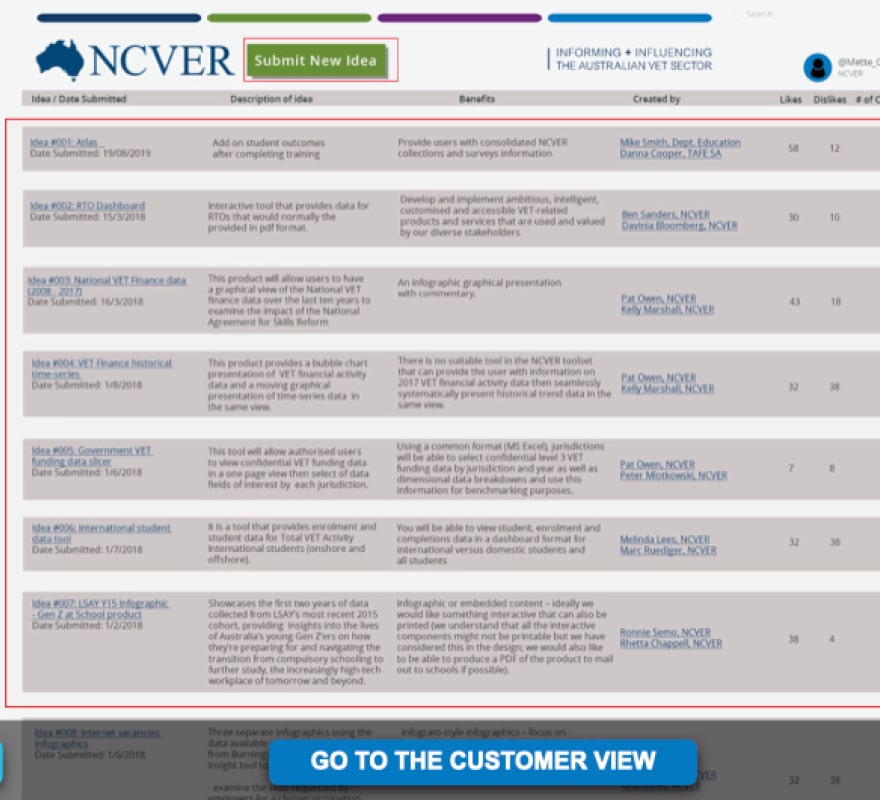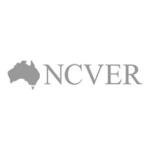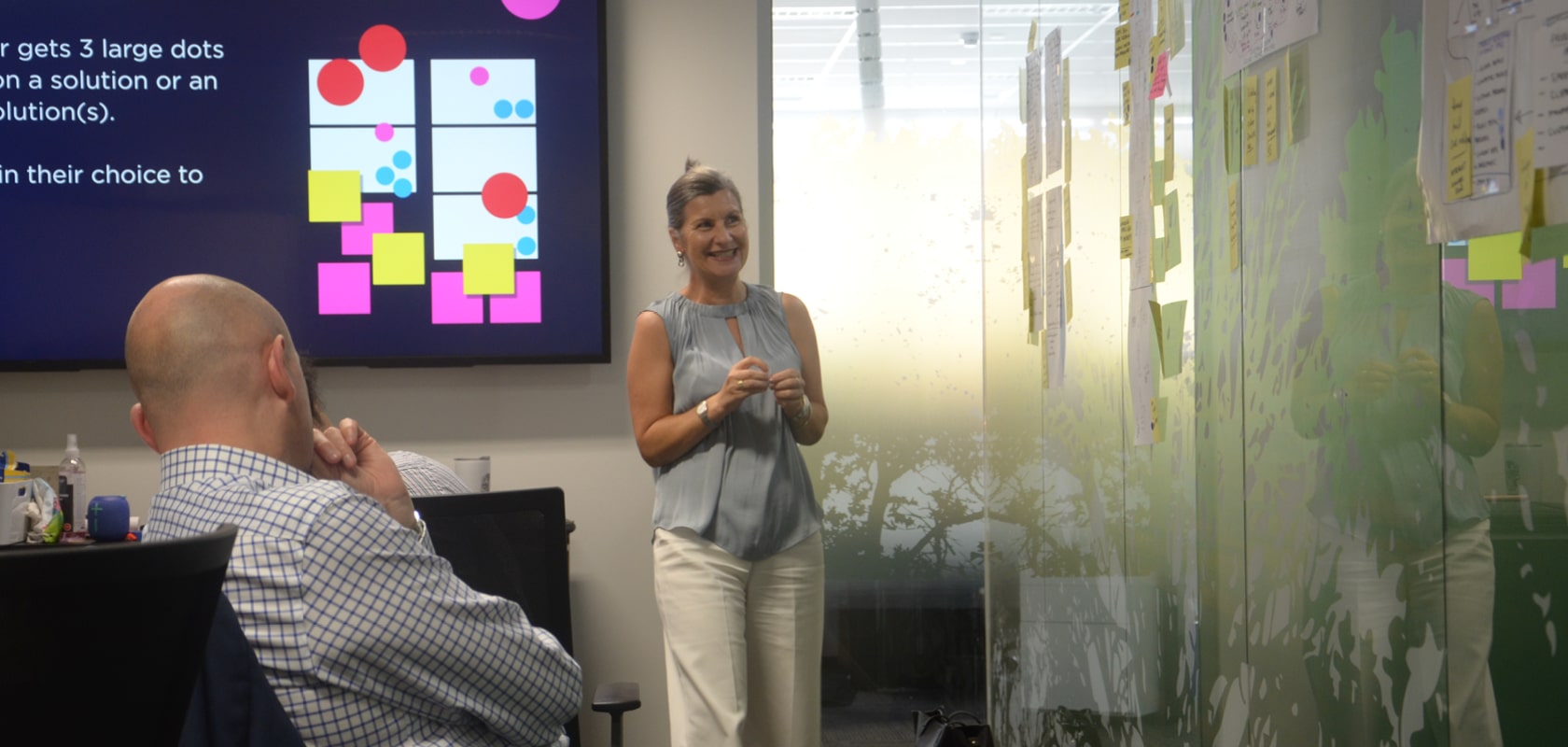
Key points
- National Centre for Vocational Education Research (NCVER) identified that they were developing and improving on products without knowing how they were directly impacting their customers.
- It was determined that the final outcome would be a customer collaboration piece where a knowledge-bank of project and customer insights could be referred to when determining the success criteria and customer desirability to proceed.
- The final prototype presented was a ‘future-state’ process map for the design stage of the process map supported with a working prototype named the iHub.
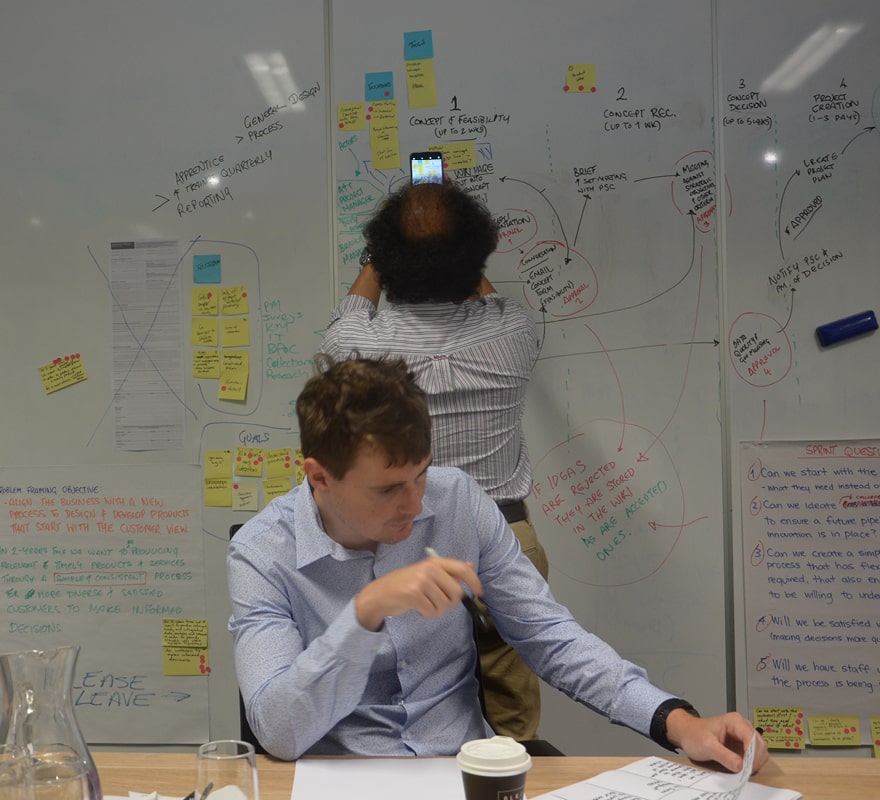
Their brief to us
NCVER had been developing and improving products without adequate knowledge of the impacts on its customers. The challenge was to build a clearly defined discovery phase into the new product process which included the customer’s view. This was for a number of reasons. Internally it would allow NCVER to standardise their approach to project development and the nurturing of new ideas. It would also allow them to speed up the delivery of new project development and further meet the needs of their customers. Externally, it would enable NCVER to deepen relationships with stakeholders, by getting buy-in and endorsement early to ensure that they invest time and resources in the areas that are most relevant.
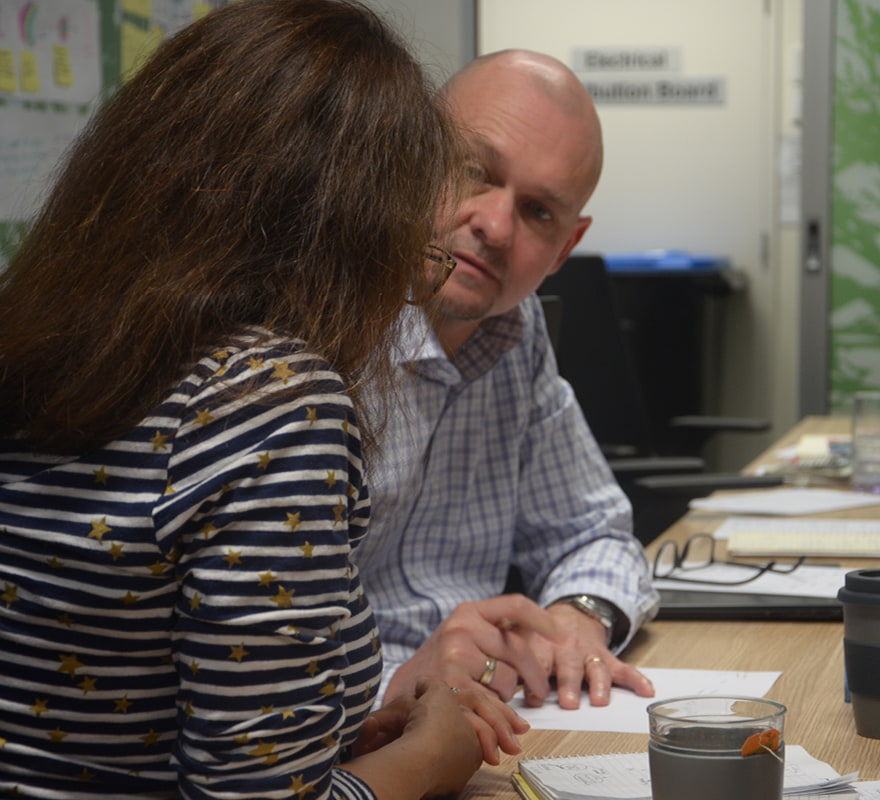
What we did
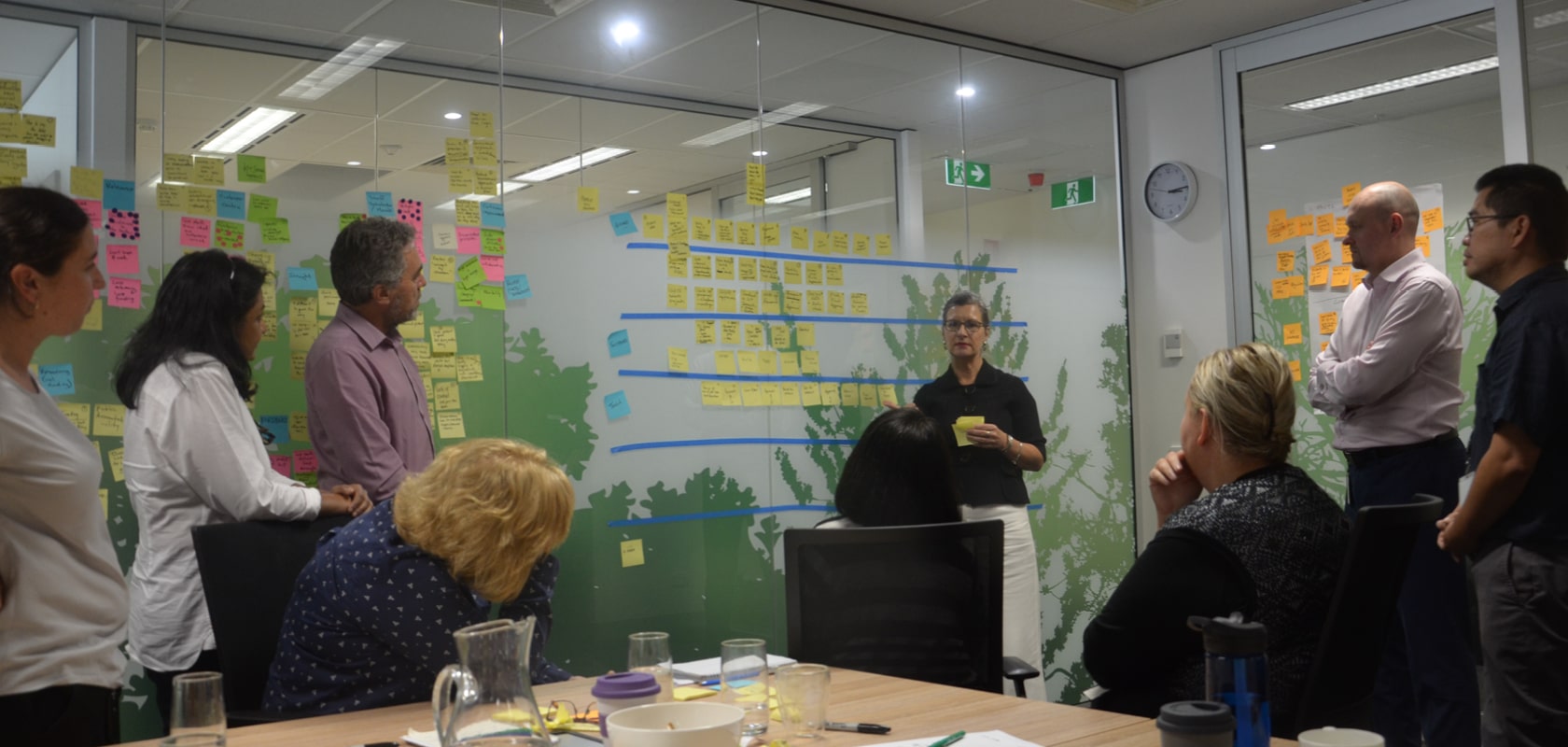
Early on, it was apparent that the challenge was rooted further upstream by the need for closer customer collaboration. The group decided that the focus of the Design Sprint should be on the customer collaboration piece and that any outcome should serve as a platform to build momentum and buy-in from the wider business.
The themes inspired by the ideation phase were –
- Full visibility and transparency for customers and employees at NCVER.
- Receiving consistent and open feedback from customers, ie. a consulting mechanism.
These were referred to form a final concept solution and then construct a storyboard to envision a new design process. A vital gap was identified during this process, leading the team to adapt their approach to providing a minimum viable product where customer insights could be plugged at a later date.
This discussion inspired the development of a Process Map comparing a current and future state supported by an interactive iHub prototype to demonstrate how this could work. The redesign of the future state process map optimised many of the decision points and approval process’ that had proved bottlenecks and pain points for teams previously. The iHub concept was designed to convey how the process would work and stepped test subjects through the process map. The intended outcome of the program was to gain validation from the business to proceed to set the foundation of a future business plan.
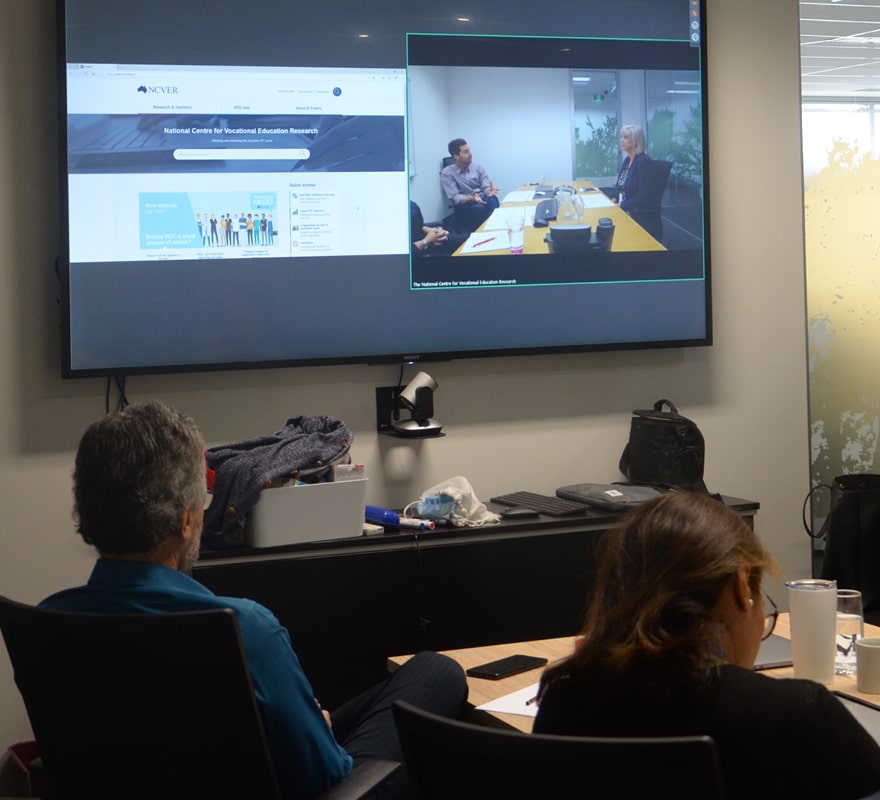
The Result
Overall, the outcome of testing was successful. There was a unanimously positive reaction towards the inclusivity of NCVER’s customers throughout the proposed process and the prototyped solution was described as ‘radical’ and very different to the way NCVER had been operating. It challenged many of the preconceived defaults in the current process, but still seen as a great opportunity to revisit the existing process to provide consistency and confidence in new ways of working.
After testing, the team provided optimistic feedback along with a list of challenges that would need to be tackled in the future before bringing the product design across the business. The project is currently in the early stages of production.
